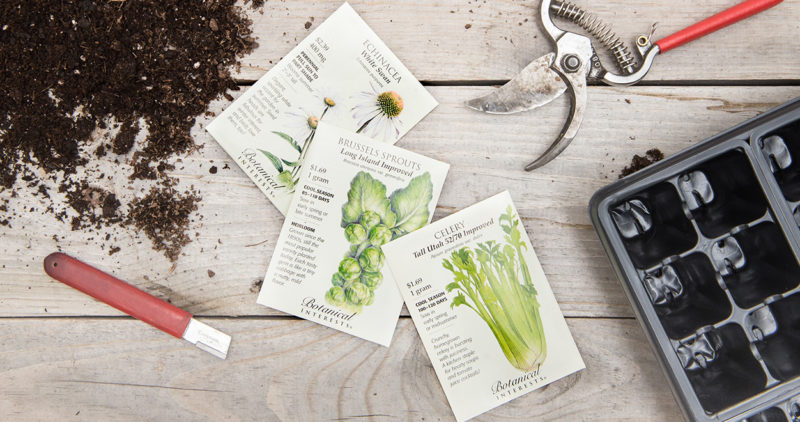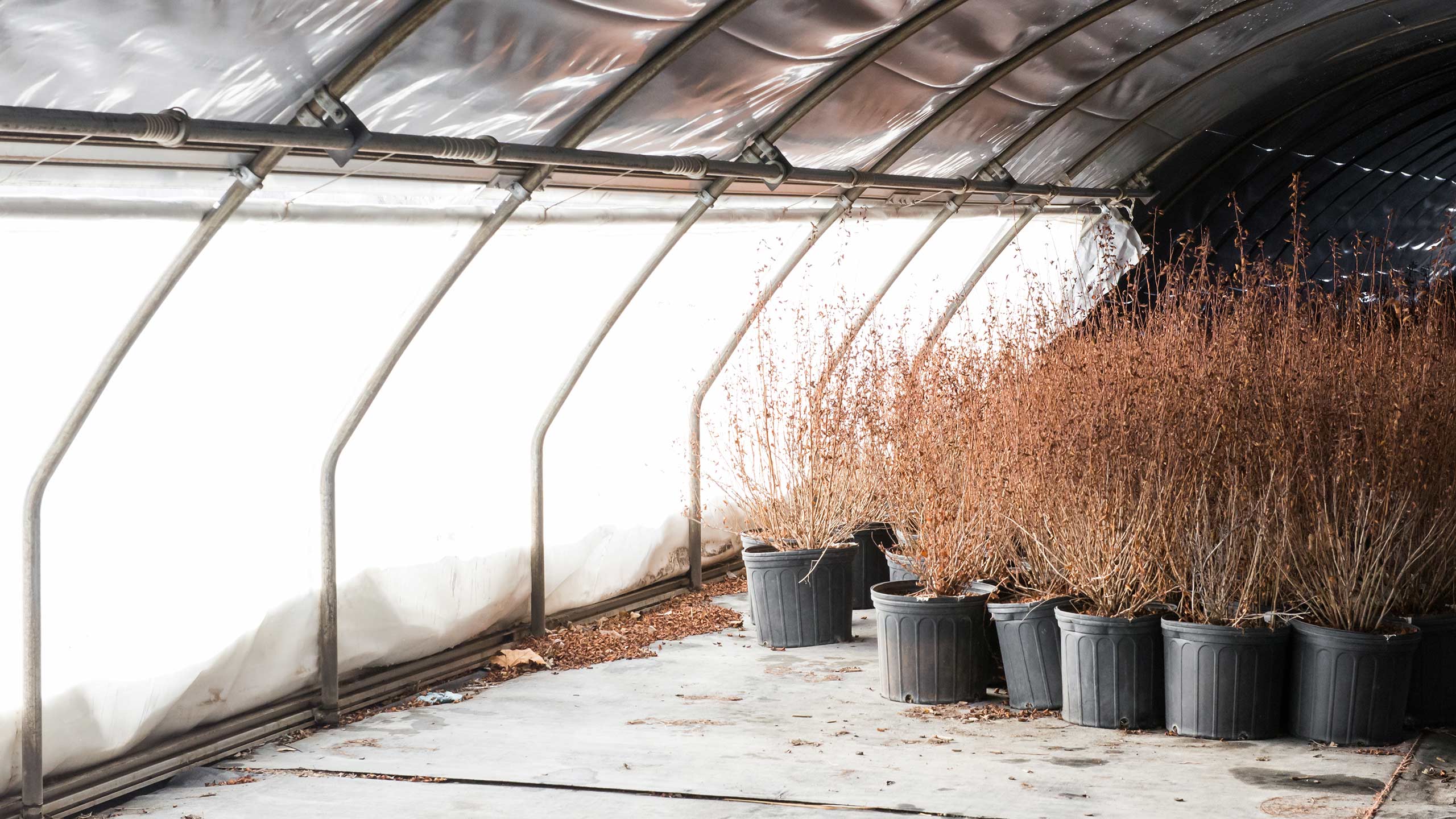
When the weather begins to warm in April, we’re always excited to see our selection of deciduous shrubs, perennials, and groundcovers appear again in the Hardy Plants area of the store. But, where did these plants spend their winter? How are they already greening up and showing signs of new life as they arrive on the store tables in early spring? The answers can be found over at our production farm. On the farm, head grower Dana Leehy and her team carefully monitor our collection of hardy plants while they sleep for the winter. She’s justifiably proud of her team and happy to describe the process we use each fall to prepare our hardy plants for their winter break – and how we begin to wake them up again so they’re ready for spring. Some exciting new changes are taking place at our farms too, as we continue growing plants to help make our community a beautiful place to live.

Hardy Plants Need Cold in the Winter – But Not Too Much
As much as humans may not like it, winter’s chill is important for the beauty and productivity of the hardy shrubs and perennials that return year after year in our area. Dana explains that generally speaking, most plants need some period of dormancy to rest and rejuvenate in preparation for another successful growing season. And for hardy plants in our climate, this dormancy period is triggered and maintained by cold temperatures. In flowering perennials and shrubs, a cold dormancy is also required for the plant to bloom well and at the correct times the following year. In our outdoor landscapes, hardy shrubs and perennials are planted in the ground, so they go through this dormancy with their roots protected from extreme winter weather. For the potted hardy plants we grow and store over the winter, the root systems don’t have that same kind of protection. So instead, we store them in special greenhouses and other protective structures during the winter. These special structures allow the plants to experience the cold they need to go dormant while also protecting the root systems from freezing solid and killing the plants. Dana says the hardy plants we store in this way may be multi-year crops that require a few years of growth and development before they’re ready to be planted in a landscape. Or they may also be perennials we’ve planted into pots in the fall to give them a head-start on the next spring season.
The Overwintering Process
Dana says there are several practices plant growers can choose from to overwinter hardy plants. To find the best methods for storing our collection in our Midwest location, we combine our own ideas and experiences with new research and discussions with other plant producers. There are many decisions to make involving the style and size of structures to use, what kind of covering they’ll have, whether to provide heat and how much, whether to use special blankets on some varieties of potted plants, and other aspects of the plants’ care through the winter. At one of our farms, we have over eighty hoop houses – half-moon-shaped structures constructed with a rounded aluminum frame and covered with layers of plastic sheeting called “poly.” These hoop houses may be only six feet tall at their highest point in the middle, but they stretch for one hundred feet in length. Starting in October, the hoop houses are simply metal frames without the poly covering. At that time, Dana and her team weed the gravel beds beneath the frames, getting them cleaned and ready for the shrubs and perennials we’ll store there starting later in November. The plants in their pots are also weeded, watered, trimmed if needed, and then lined up snugly in rows within the hoop houses. Shortly after Thanksgiving, the team covers the hoop houses with layers of plastic poly sheeting – traditionally a layer of clear plastic covered with a layer of white plastic on top – and the plants are officially “tucked in” for their dormancy period. Throughout the winter, the team monitors the plants’ condition and prunes some that weren’t pruned before getting tucked in.
As Spring Approaches
Starting in late-February and continuing into March, activity picks up significantly on our farms as new immature shrubs and perennials begin arriving from other partner plant-growers and Dana and her team plant them into new pots. Newly-planted shrubs make their way to hoop houses while perennials are stored in larger heated greenhouses nearby. By mid-March, the team begins removing the top layer of white poly from all the hoop houses, leaving the clear layer intact. This clear layer protects the plants from frost and wind but allows sunshine to penetrate and slowly begin to warm the plants. This early warming gently wakes the hardy plants from their dormancy and gets them started greening up and looking beautiful earlier than their counterparts planted outside in our landscapes. This way, they’re already putting out signs of life and showing their beauty when they head to our store tables in the spring.
Exciting New Changes for 2018
Just because we’ve successfully overwintered tens of thousands of plants over the past decades doesn’t mean we aren’t always looking for ways to improve our practices, and Dana and her team are excited about some recent new changes happening on the farms. Last year, we built four new larger greenhouses at the farm, and this year, we’re trying a new style of hoop house in addition to the others. Across all the hoop houses, we’ll be testing different types and combinations of poly covering. With these new houses and coverings, the focus will be on carefully recording environmental data within each of the different structures. A new system of remote sensors will allow Dana to track temperature changes and compare them between houses from her phone or computer. With this data, Dana will be able to determine the best methods for storing all the different types of plants we overwinter. And to help regulate the pH levels and other measures of quality in our water, we also recently installed a new sulfur burner in the irrigation pond. The water originates in a nearby creek, and the pH of the water is usually too high, but with regular testing and maintenance, the new machine allows us to maintain an ideal pH of 6 to 6.5 in our irrigation water.
It may be January, but our plant production team has been preparing for another productive and beautiful spring for several months already. Dana and her team of growers enjoy taking care of our collection of hardy plants through the winter, and they’re excited for the growing season to come. Dana says she has many goals for this year, but her main focus is always to continue growing healthy, beautiful plants with the help of her incredible team.


